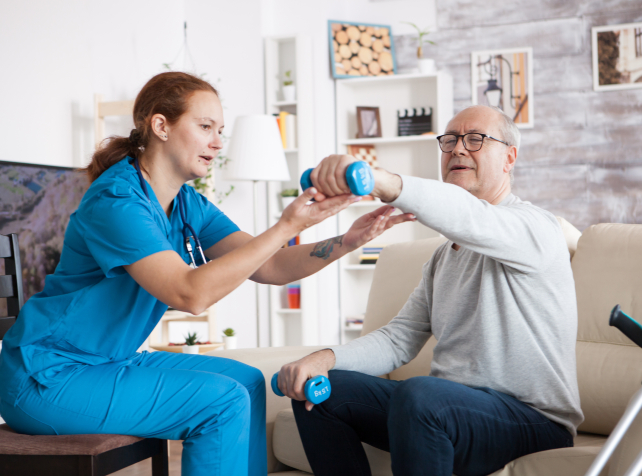First-hand stories from Aboriginal and Torres Strait Islander physios reveal how connection, culture and community shape practice—and inspire the next generation.
When you sit down with Indigenous physiotherapists and ask what drives their work, one word comes up again and again: connection. Connection to community, to culture, to history—and to patients as people, not just as cases.
Subscribe for FREE to the HealthTimes magazine
“I became a physio because I wanted to give back,” says Marissa, a Yorta Yorta woman working in regional Victoria. “People in my community didn’t always feel welcome in the health system. I wanted to be part of changing that.”
For many Indigenous physios, cultural safety isn’t just a professional standard. It’s something they live every day. Daniel, a Kamilaroi man now based in Sydney, remembers what it felt like to be the only Aboriginal person in his physio degree. “It was tough at times,” he reflects. “But I knew that if I could push through, I’d be able to stand on the other side and help patients who need someone who gets it.”
These personal stories highlight a point often made in cultural safety training: patients are the ones who define whether care feels safe. “Sometimes it’s the little things,” says Leah, a Torres Strait Islander physio who works in community health. “Asking about someone’s family. Not rushing. Letting silence have space. Those things make people feel respected.”
Others emphasise that being a First Nations physio can carry a unique kind of responsibility. “You’re not just treating the patient in front of you,” explains Tyson, a proud Wiradjuri man. “You’re also representing your community. You’re showing young mob that this pathway is possible.”
That sense of being a role model comes up often. Indigenous physios talk about the importance of visibility, not only for patients but for the next generation considering careers in healthcare. “When a young person sees someone who looks like them working as a physio, it plants a seed,” says Marissa. “It says, you belong here too.”
Working in both mainstream and community-controlled services brings unique challenges. Remote practice, in particular, requires adaptability. “When I was out bush, I learned to stop thinking in appointment slots,” recalls Leah. “People might travel hours to see you. You can’t just give them 20 minutes and send them off. You have to listen, yarn, and make sure they leave with what they need.”
That kind of flexible, person-centred approach benefits all patients—but for First Nations communities, it’s vital. Historical mistrust of the health system means clinicians must go the extra mile to build rapport. “Trust isn’t given straight away,” Daniel explains. “You have to earn it. And you earn it by showing up, being respectful, and being consistent.”
Despite the challenges, every physio interviewed speaks about the rewards of the work. “When someone tells you they feel safe coming to the clinic because you’re there—that makes it worth it,” says Tyson. “That’s what cultural safety looks like in real life. Not a tick-box, but a feeling of belonging.”
For non-Indigenous colleagues, these voices offer guidance as well as inspiration. The message is clear: listen, learn, and approach every interaction with humility. “We don’t expect everyone to know everything,” Leah says. “What matters is being open, asking questions respectfully, and being willing to walk alongside us.”
Ultimately, Indigenous physios bring more than clinical expertise. They bring cultural knowledge, community connections, and lived experience that enrich the whole profession. Their stories remind us that cultural safety isn’t abstract—it’s about people.
As Marissa puts it: “At the end of the day, physio is about movement. But it’s also about moving forward together, carrying our culture with us, and showing that healing is not just physical—it’s about spirit, family, and community too. That’s what keeps me grounded in this work.”
Her words echo the reflections of many First Nations practitioners: cultural safety is not a checklist, but a way of being. For colleagues across the profession, these stories are a reminder to keep listening, to keep reflecting, and to recognise that every patient encounter is also an opportunity to build trust. By valuing connection as much as treatment, physiotherapists can help create a health system where everyone feels they belong. Together, these voices call on the profession to walk alongside First Nations communities with respect, humility, and a shared commitment to better health.












